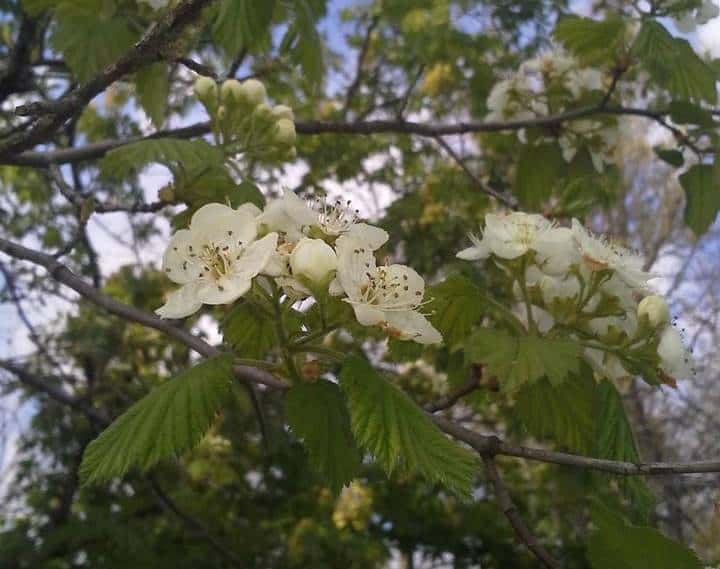I have been working as a landscape maintenance professional now for more than 10 years and each year get more exciting. One thing that never changes is how my customers feel about their hawthorn trees. They love them! And I am not surprised at all. Hawthorns in Kansas seem to embody the spirit of strength, age, and beauty.
Despite wicked thorns, these trees shine in all the landscapes we maintain. Not everyone has hawthorns, but those that do revel in their beauty. The slow growing hawthorn is a welcome in any garden space. I have seen them tie together a Shakespearian garden, backdrop a cottage garden, and deliver in a wildlife garden.

There are several hawthorn species native to North America and Europe. Here we often find Washington Hawthorn and Downy Hawthorn in our landscapes. New cultivars of English Hawthorn are also noted for their brightly colored flowers.

In spring, hawthorns push forth a frothy cluster of white flowers borne above those vicious thorns. While the smell is reminiscent of something rotten, they do add color without the mess of fruit like the ornamental pear. Hawthorns then open up with brilliant red berries that persist into winter. The berries are not bird favorites, but will be eaten in winter as less food is available. They are not invasive like the pear, making hawthorns a good landscape choice. The Washington hawthorn also has good red to purple fall color.

One of the biggest challenges in growing hawthorns is their growth rate. They are slow in comparison to most trees, putting out less than 1 foot per year. Many species are also susceptible to leaf blights, causing defoliation in summer. This can be a real problem for those who enjoy the shiny leaves of the tree. There are injections and sprays available to those who have blight prone trees.
Most landscape hawthorns reach a mature height and width of 30 feet. The bark is brownish-gray and chipped. Trees shine in the winter with the bright clusters of red berries. Two varieties of English Hawthorn (Crataegus laevigata) produce pinkish-red flowers instead of white, ‘Crimson Cloud’ and ‘Paul’s Scarlet’. ‘Paul’s Scarlet’ is very susceptible to blight, while ‘Crimson Cloud’ is resistant.

Instead of planting more problematic ornamental pears, let us plant more beautiful hawthorns in our landscapes and streetscapes. There are also a few hybrids and cultivars that are thornless and would work well in downtown areas. Come to Grimm’s Gardens to see our selection of hawthorns and other replacement plants for ornamental pears!
Keep on planting!




I moved in and need help with my Hawthorne. I’m not sure what kind it is and its very bare and lots of dead. I don’t know whether to cut out the dead or try to treat it.